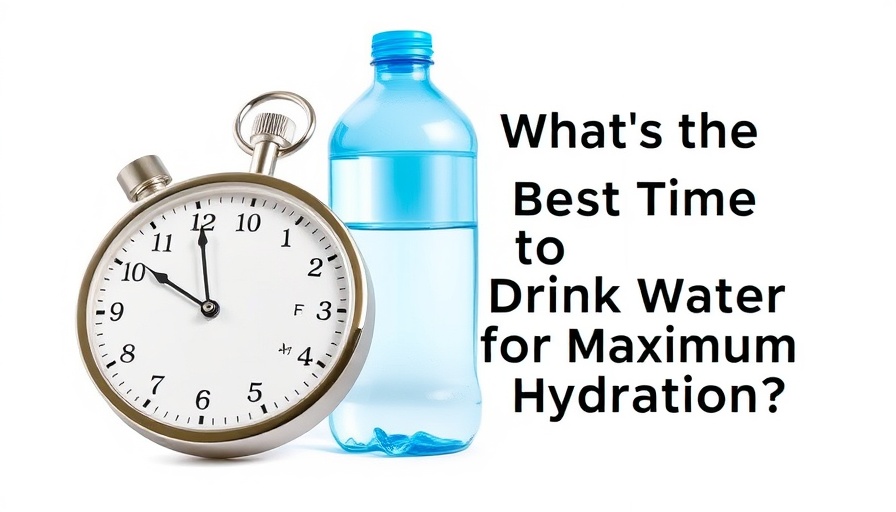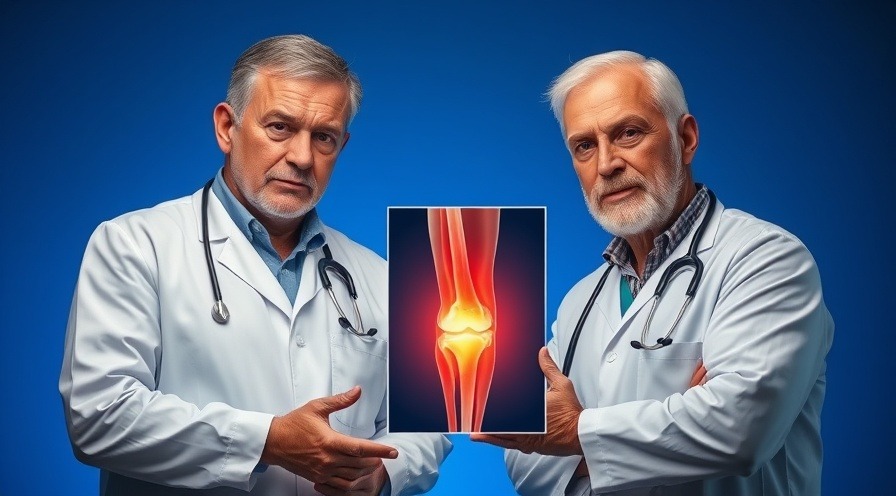
Understanding the Importance of Hydration Timing
Water is the essence of life, but did you know that the timing of your hydration can significantly affect your overall health? As highlighted in the video Boost Digestion & Energy: Smart Water Drinking Tips, understanding when to drink water can enhance your digestion, energy levels, detoxification, and even sleep quality. Parents and adults focusing on health, wellness, and convenience will find that minor adjustments in their hydration habits can lead to substantial improvements in their day-to-day wellbeing.
In the video Boost Digestion & Energy: Smart Water Drinking Tips, the discussion dives into crucial hydration strategies, exploring key insights that sparked deeper analysis on our end.
Kickstart Your Day with Morning Hydration
One of the most critical moments to drink water is right after waking up. After a night of sleep, our bodies can become dehydrated due to fluid loss through breathing and sweating. Drinking 1-2 glasses of water first thing in the morning not only helps wake up your metabolism but also flushes out toxins that have built up overnight. This simple habit prepares your digestive system for the day ahead and provides a refreshing start.
Prep for Successful Digestion
It’s not just about drinking water when you feel thirsty; timing can aid in digestion as well. Sipping a glass of water 30 minutes before meals helps create a feeling of fullness, reducing the likelihood of overeating. It also supports the stomach lining and the production of digestive enzymes, ensuring your body is ready to process the food you're about to eat. For parents, this can be a valuable technique to instill in kids as they develop healthy eating habits.
Avoid Overhydration During Meals
While staying hydrated is crucial, drinking large amounts of water immediately after meals can be counterproductive. It may dilute stomach acids, hindering digestion. Instead, it's advisable to wait 30 to 60 minutes after eating before drinking large amounts of water. Small sips can help with thirst, but limiting intake right after meals allows your digestive system to work efficiently, making it an essential tip to pass along to your family.
Hydration Before and After Exercise
For those who lead an active lifestyle, hydration is vital both before and after exercise. Drinking water 15-30 minutes ahead of a workout prepares your body for physical activity and helps maintain hydration levels during exercise. Once you've completed your workout, replenishing lost fluids is essential—especially after sweating extensively. For intense workouts, consider adding electrolytes to your post-exercise hydration routine to maximize recovery.
Combatting the Midday Slump
Your midday energy dip around 2 to 3 p.m. could be a signal from your body indicating dehydration rather than mere fatigue from a long day. A simple glass of water during this time can provide the energy and focus boost you need without relying on caffeine, which can come with undesirable side effects. Staying proactively hydrated throughout the day can improve your overall energy levels.
Strategic Hydration Before Sleep
As the day winds down, consider having a small glass of water before bed. This can help prevent overnight dehydration, which can impact sleep quality. However, moderation is key; consuming too much could lead to disruptive bathroom trips throughout the night. Balance is essential, making this just one more component of a mindful hydration strategy.
Practical Tips to Stay Hydrated
Carrying a refillable water bottle is a smart way to ensure you’re drinking water consistently throughout the day. Aim for clear or light yellow urine as a hydration indicator, adjusting your intake based on activity levels. Additionally, during hot weather or increased physical activity, increase your hydration accordingly. Small, consistent adjustments can lead to significant benefits for your body and mind, reinforcing why proper hydration habits are crucial.
Ultimately, integrating these hydration tips into your daily routine can help every parent and adult maintain their health effectively. By being mindful of when and how much water you drink, you can reap the benefits of better digestion, greater energy, and improved overall health. So, let’s prioritize our hydration and embark on a journey to a healthier lifestyle.
 Add Row
Add Row  Add
Add 




Write A Comment